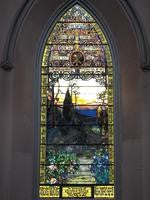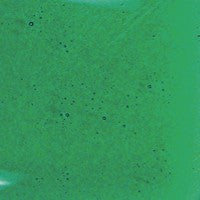The other day I was having a conversation with a glass artist about the difference between round rebar and flat rebar. Honesty, I have been in the business a long time, and I really did not know they had different purposes!
Then, I was at a concert that was an Elton John tribute band. It was at a venue in Madison, Maine called the Somerset Abby. A delightful couple rescued an old church and have turned it into a spot to hold events. It is a beautiful building. While everyone else was focused on the band, (and they were talented and entertaining) my brain was jumping around the room! There was a rose window above the band. It had both round and flat rebar. It was not lit. I decided at break to go out and get a picture from the outside, so it would be lit. As I was checking with the man at the door on my way out (so I could get back in) he told me to forget it because it was covered on the outside, but if I waited after the concert, he would turn the back-light on for me. I waited until the room was almost empty and then went back to him. He said “oh, the bitch is back” - I had to forgive him because that is what the shirt I was wearing said (remember it was an Elton John tribute!) He lit this beautiful window for me. Note the round and flat rebar.

Then I read several articles about rebar. I like the one by Vic Rothman. I don’t know who he is, but I want to give him credit for writing a clear and concise article which I have copied below.
Rebar 101
by Vic Rothman
There is a lot of debate about rebaring. I will attempt to clarify what rebar is and how it is used. The term rebar means different things to different people. The round (sometime square bars) you see in church windows are called saddle bars. The bars are set into holes drilled into the window sash (removable window frame) or window frames(non-removable). The windows have ties soldered to them at the solder joints. In olden days they used lead as ties, today it's copper wires. These ties are twisted around the saddle bars. The purpose of the saddle bars is to prevent the windows from being blown into the building, not support. At one time stained glass was a real window out in the weather. The ties should not be made very tight, but should be about one twist loose, thus the window can move in the wind. These bars are normally across the shortest distance. Next is flat rebar solder directly to the stained glass. These bars are sometimes drilled into the sash and frames, or just run full length of the stained glass and put under moldings. These rebars act like the saddle bars, but because they are soldered in place, they also prevent the window from deflecting near the bars. They will not hold up the windows. Now we have real rebar. This can be thin brass strips referred to as "fins", sizes range from 1/4" to 1" wide and about 1/32" thick. They are bent to conform to the lead or solder lines of the windows and are run in every direction. Last year I worked on a Tiffany window made about 1920 that was 4'x 9 1/2' (it took 5 people to move it) the back was a maze of fins and the window was perfectly flat. In copper foil window these fins can also go between the glass during construction. But as with any flat rebar the strength goes from the width not just the thickness of the metal. Thus a 1" wide bar is stronger than a 1/4" bar. Rebar traditionally goes on the inside, because you do not want rain, snow etc. getting on and corroding the bars if there were outside. If there is outside glazing, you can put the rebar on the rear. The placement of rebar is not rocket science. It is very logical. You put them perpendicular to a lead line that might fold. Parallel lines, glass borders, concentric circles etc. In large windows you may need rebar running through the center to prevent the window from flexing. Rebar is VERY design and window location dependent. The size of the window does not matter. You can have a 12"x12" window that needs rebar and a 3'x3' that does not. If you design the lead lines well, you need less rebar. As for seeing the rebar get over it. Rebar is part of stained-glass construction. If done right if should not detract from a good-looking window.
 I don’t have a picture of the plates.. but imagine two pieces of this blue baroque full fused and then slumped! You could also make a slumped vase, or a bowl.
Another idea is to smash it up and use it in casting molds.
I don’t have a picture of the plates.. but imagine two pieces of this blue baroque full fused and then slumped! You could also make a slumped vase, or a bowl.
Another idea is to smash it up and use it in casting molds.
 This picture is from Elegant Fused Glass by Karen.
The difficulty is you will have to figure out your firing schedule. You may have to coat it with Spray A to reduce devit.
This picture is from Elegant Fused Glass by Karen.
The difficulty is you will have to figure out your firing schedule. You may have to coat it with Spray A to reduce devit.









































